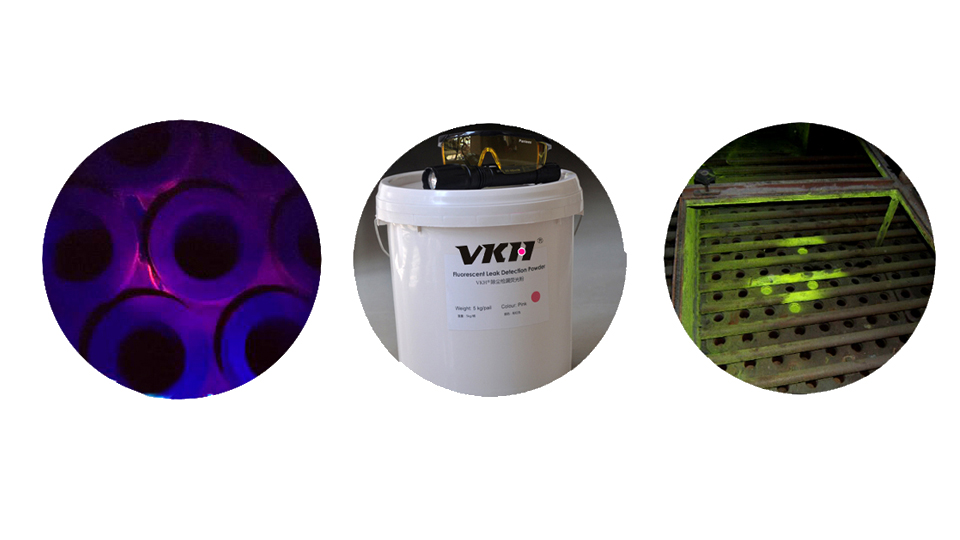Standard operation specification for fluorescent powder for bag leakage detection of electrostatic precipitator
In the 1990s, the leakage detection technology of electrostatic bag precipitator and its cloth bag was basically blank in China. However, since the first electrostatic bag precipitator was put into operation in 2003, more than 100 electrostatic bag precipitators have been put into operation in China, with good performance indicators. With the improvement of environmental protection standards, the market share of electrostatic bag precipitator will be higher and higher. As an important means of technical detection, the fluorescent powder leakage detection technology of electrostatic bag filter is becoming more and more mature!
According to the leakage detection operation experience of several electrostatic bag precipitators, the following specifications are summarized for reference in bag leakage detection
Preparation
-Develop the fluorescent powder leak detection plan, prepare tools: appropriate amount of VKH Fluorescent powder, VK-D2 fluorescent lamp (must be fully charged), filter glasses, number pen (or label / paint and other marking tools). Filter bag distribution map, above powder, lamp, glasses must match. Others: helmet, mask and other protective equipment, bucket opening tools, etc. (specific quantity, tools shall be selected according to site conditions)
Note: the dosage of VKH phosphor is 5g per square meter for ordinary emission and 8-10g per square meter for ultra-low emission,
-Replace the obviously damaged filter bag (cylinder) in advance (ensure that the leakage from the dust containing gas chamber of the dust collector to the clean gas chamber is very small, avoid a large amount of fluorescent powder escaping from the leakage point and interfere with the judgment), and clean up to keep the pattern plate of the clean gas chamber clean.
-When the unit is shut down, the dust removal system should have operation control conditions,
-Before the used dust collector starts to feed powder, open the dust cleaning system, and after 20 minutes of dust cleaning, close the injection system!
-Note: the detection of top cover dust collector should be carried out after dark at night (the darker the ambient light is, the better, convenient for fluorescent lamp detection)
Operation guide (for VKH-11 ~ 17 Series)
The following operation guidelines are based on the best value of VKH leak detection phosphor test. If the operation site situation changes, please adjust according to the actual situation:
-Under the condition that the ash cleaning system stops running, the induced draft fan will operate at about 60% - 80% opening (a small amount of powder shall be tested first, subject to the powder does not fall into the pipe and has good diffusibility). Generally, it shall not be less than 70% of the design value, and the resistance of the dust collector shall not be less than 800pa
-The position of the phosphor input port should be about 8m away from the air inlet of the dust collector. If it is longer, the amount of phosphor input should be increased.
-Shake evenly before adding powder, and open the end in advance. Put in the phosphor evenly.
-After the input of the phosphor is completed and the phosphor is completely inhaled at the input port, turn off the main fan, light the phosphor with a fluorescent lamp from the inspection door to see whether the distribution of the phosphor is uniform, and randomly select 1-2 filter bags to check the adhesion of the phosphor. If it is up to the standard, go to the next step. If it is not up to the standard, continue to add powder.
-After the fan is closed, the clean gas chamber or the top cover of the dust collector can be opened, and the fluorescent lamp (UV lamp) can be used to carefully detect the joints of the flower plate in the clean gas chamber, the interface points between the filter bag and the flower plate, the welding points, the lifting valve, the bypass valve, the outlet flue, etc. When detecting, the darker the ambient brightness is, the more helpful the leakage detection is.
-Analysis principle: if a bright powder is found at a certain position in the clean air chamber, it indicates that there is a leak nearby. Pay attention to check the position, distribution, quantity and trend of the powder, and use it as a mark on the site and on the drawing at the first time to avoid secondary pollution interfering with judgment.
-Note: before entering the dust remover, the personnel shall not be contaminated with phosphor to avoid interference with judgment. It is suggested that different personnel should be responsible for powder feeding and inspection.
-If there are many leakage points, the leakage can be repaired and a new filter bag can be replaced. After repairing the leakage point, another color comparison phosphor VKH-12 can be used for secondary leakage detection
-After the rectification, the fluorescent powder leakage detection work is completed, the personnel and tools are counted, the precipitator is restored to the state of standby, and the fluorescent powder leakage detection report is prepared.





